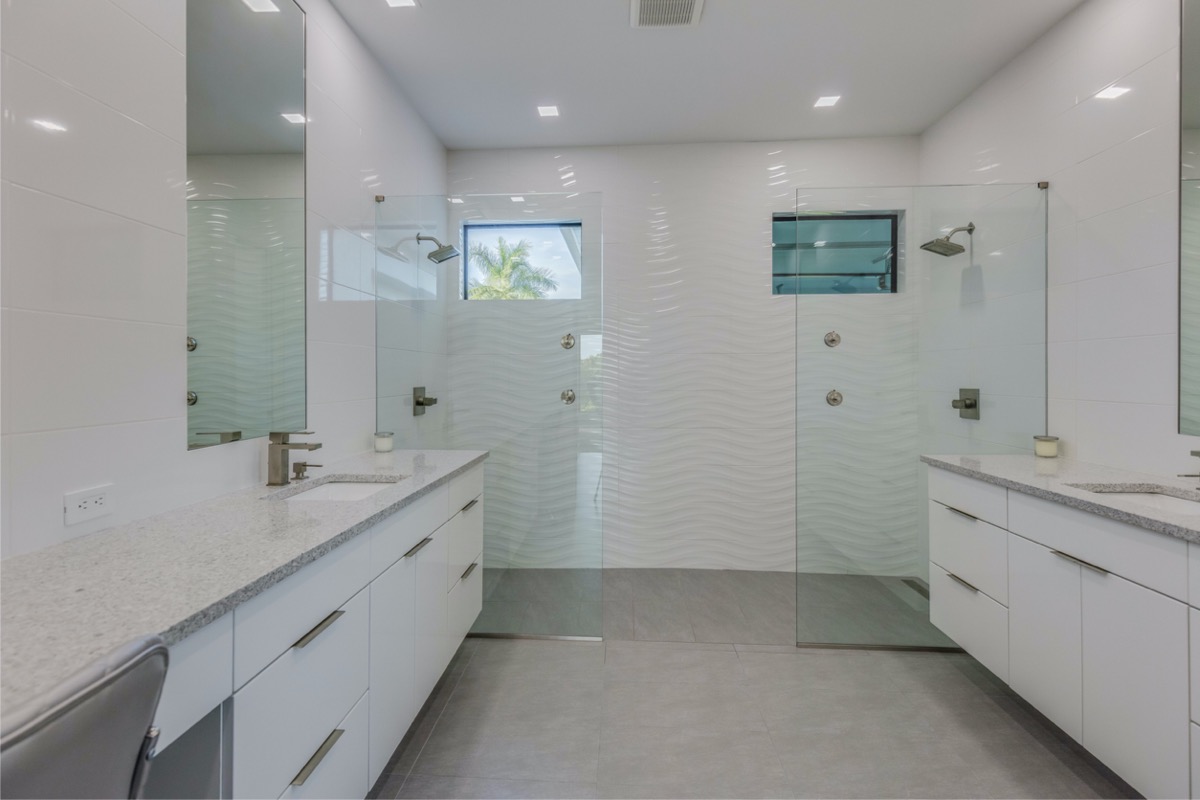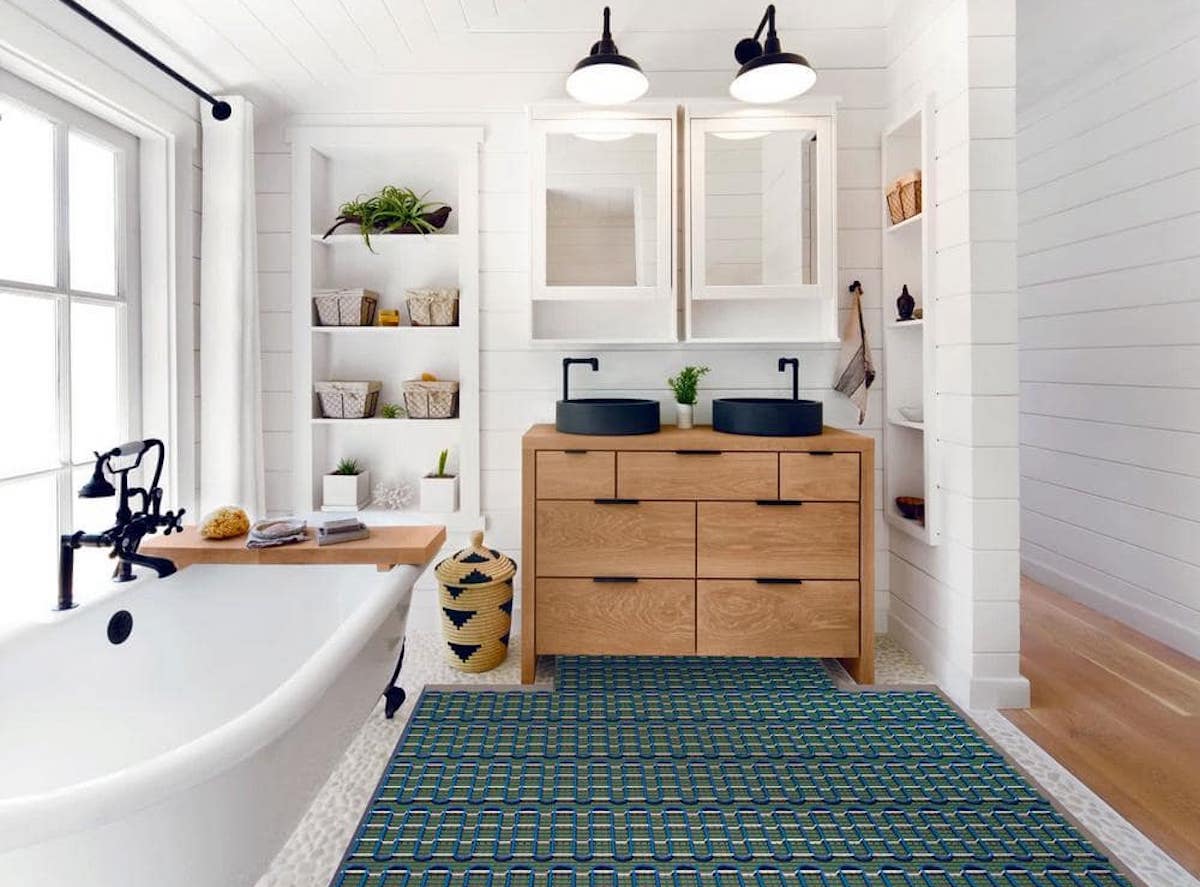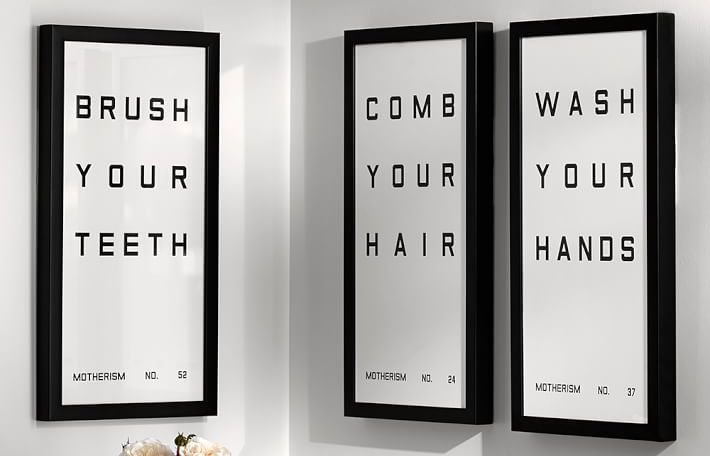

We may earn revenue from the products available on this page and participate in affiliate programs. Learn More ›
It’s amazing the impact that remodeling a bathroom can have on the overall feel of a home. Even though most bathrooms are typically much smaller than the other rooms in a house, a full renovation or even a simple face-lift can make a big difference.
If you’re ready to say goodbye to outdated tile, fixtures, or paint color, use these bathroom remodel ideas to guide you in designing a functional and attractive space that you can enjoy for years to come.
1. Walk-In Shower

If you’re doing a full bathroom renovation, consider adding a spacious walk-in shower. Not only do walk-in showers offer a more accessible design, they are also usually easier to clean and work well in large and small bathrooms. Walk-in showers can help a bathroom feel more open, and they also help contribute to modern and contemporary designs.
2. Eye-Catching Tile

Choosing the wrong tile is a bathroom remodeling mistake best avoided. Going with something too bland may only lead to regrets down the road. Why not add a pop of color or artistic flair to your bathroom by choosing an attractive and eye-catching tile that can help form the basis for your bathroom decor.
3. Double Vanity

If you’re looking for master bathroom ideas, then you may want to consider adding a double vanity, such as this one available at The Home Depot, which features brown oak cabinets and drawers, a white quartz counter, and gold hardware. A double vanity can be a real relationship-saver when two people need to get ready at the same time. Plus, it offers so much more countertop real estate for holding personal care products.
4. Bidet

Adding a bidet is another top bathroom remodeling idea. In addition to increasing your personal comfort and cleaning, using a bidet can be more environmentally friendly than using toilet paper. They can even help limit clogged toilets and other potential plumbing issues. If you don’t have the space to add a full bidet to your space, there are all-in-one budget toilet seats.
5. Statement Bathtub

When planning out your bathroom design, think about getting rid of an old wall-attached bathtub in favor of a new statement bathtub. Choosing a large and luxurious bathtub can enhance the aesthetic appeal of your space while also offering the perfect spot to relax and unwind after a long and stressful day.
6. Sound System

Incorporating a sound system into your bathroom remodel plans can help you create the ultimate relaxation space. Pairing your sound system with a built-in TV, as shown here, will allow you to catch up on your favorite shows or watch a movie while enjoying a soothing bath.
7. A Place for Plants

Don’t forget to incorporate a space for plants into your bathroom design ideas. Plants can remove toxins from the air, keeping your bathroom cleaner and healthier. The high humidity level of a bathroom can create the ideal condition for a plant to thrive. If you’re worried about adding plants to a windowless bathroom, lucky bamboo, philodendrons, ferns, and numerous other plants can thrive without natural light.
Related: 12 Plants You Can Grow Successfully in the Shower
8. Accessibility

Improving accessibility is one of the best reasons to remodel a bathroom. This conversion kit available at The Home Depot allows you to convert a bathtub into a walk-in shower. The kit is compatible with all bathtub types including fiberglass, cast iron, and steel.
9. Mood Lighting

Whether you’re planning a big or small bathroom remodel, think about adding some dimmable light fixtures like this option available at Amazon to enhance the mood. Install a dimmer switch to allow you to make the lights brighter for tasks such as getting ready or applying makeup, or to dim the lights to enjoy a relaxing bath.
10. Touchless Faucets

As you’re thinking about the costs to remodel a bathroom, don’t forget to add a few luxury splurges, such as a touchless faucet like this one available at Amazon. Touchless faucets offer a myriad of benefits, including reducing the spread of germs, reducing water waste, and making it easy to turn on or off the water.
11. Radiant Heat Flooring

If your feet hate the cold shock of stepping on a cold tile bathroom floor, installing heated floors may be just the solution. You can even DIY this update with a radiant floor heating kit like this option available at The Home Depot. The special heated mesh material can be installed beneath tile, stone, and nailed hardwood floors. Use the included thermostat to set the heat to your desired temperature.
12. Luxury Showerhead

Replacing an old shower fixture with a luxurious shower head is an easy way to upgrade the look of a shower. Imagine waking up each morning to the cascading, full-bodied rain effect of this brushed gold square shower head available at The Home Depot. In addition to the mounted rain showerhead, a handheld wand is also included with this model.
13. Mounted Towel Warmers

Keep yourself nice and toasty after a hot shower when you grab a warm towel off of this mounted towel warmer available at Wayfair. The stainless steel rack holds up to two towels or bathrobes and takes just 10 to 15 minutes to warm them up. In addition to preventing you from getting cold right out of the shower, this towel warmer will also help ensure your towels smell fresh and not musty.
14. Toilet Paper Display

This fun and functional toilet paper display available at Etsy can add a bit of levity to a bathroom. Whether you’re looking for a complete bathroom overhaul, or want to make a few small, yet impactful remodeling changes on a budget, this piece can help you achieve your goals and add some character to your newly designed room.
Related: The 12 Best Storage Products and Organizers to Declutter Your Bathroom
15. Hang Some Art

Hanging artwork is one way to make your home design stand out. The same is true when remodeling a bathroom. Hang some artwork on the walls to enhance the visual appeal of the space and provide something to look at when taking care of business. With sayings such as “wash your hands,” these bathroom signs available at Pottery Barn can be an ideal addition to a bathroom space.
